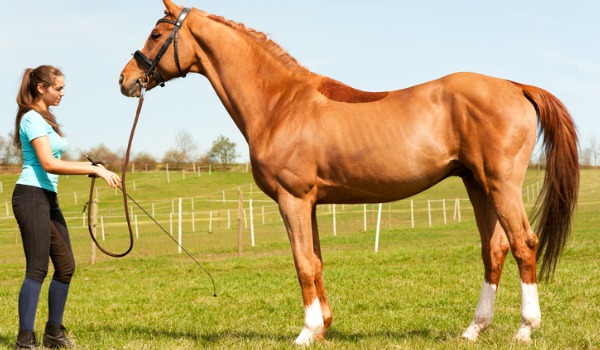What is a Horse Trainer?
A horse trainer is someone who trains horses for racing, showing, riding or police work. This involves feeding them, talking to them, exercising them, and getting them used to human contact so that the horse is able to perform certain behaviours when asked to do so.
Some horse trainers specialize in equestrian disciplines, such as show jumping, reining, dressage, endurance riding, eventing, tent pegging, vaulting, polo, racing and rodeo. A horse trainer will work closely with foremen, assistant trainers and barn managers, therefore good communication skills are important. Horse trainers must have prior experience dealing with horses before a horse trainer position can be obtained.
What does a Horse Trainer do?
A horse trainer’s job is to prepare horses to accept riders. They help horses adapt to wearing saddles and bridles, and help them understand riding commands. They also work with horses who have experienced abuse or trauma and help them get adapted to working with people again. If a trainer is working with a difficult horse, their chances of being bitten or kicked go way up, as it takes time for a horse to get used to humans. Horse trainers need to practise patience and keep a cool head when working with these powerful animals.
Another part of the job may be to prepare horses for racing, trail work, or horse shows. A trainer understands the event or race the horse is going to be a part of, and works with the horse so that it is ready for that event.

The three categories of horses that trainers work with are:
Heavy Horses -
Heavy horses have very short, thick legs that are bred for pulling carts or ploughing fields. This kind of horse is specifically made for heavy labour, like farming. They may also be shown at fairs and horse shows.
Light Horses -
Light horses are usually bred for riding purposes. They have longer bodies than a heavy horse, which allows for a saddle and rider to sit on top comfortably. Some different breeds of light horses are quarter horses, thoroughbreds, and miniature horses.
Ponies -
Most commonly mistaken for baby horses, also called foals, ponies are completely unique from both heavy and light weight horses. They have naturally thicker mains, coats, and tails. They also have smaller necks and heads than other horses.
A horse trainer analyzes a horse’s behaviour and uses this information to correct problems such as kicking, biting, dominance assertion, and head tossing. This could mean that trainers are bitten, kicked, or thrown off the horse. Trainers also assess other behaviours like nervousness, restlessness, and bolting. Trainers use different methods to get horses to respond to them such as giving them treats, or other forms of positive reinforcement when the horse does something well. To get the horses used to human contact, trainers will use their voice and physical contact.
Trainers observe a horse’s nutrition, feeding habits, and general health. They need to be able to identify if a horse needs to be seen by a veterinarian. Horse trainers also teach people how to interact with horses properly. They may teach jockeys how to manage and direct horses or teach owners how to properly handle and care for their horses.
Horse trainers who prepare horses for shows teach them commands to perform a trick or task. Different equestrians have different events so the horse trainer will teach the horse different styles:
-
Dressage is a series of movements within a standard arena. This is often referred to as “horse ballet.” It looks as though the horse is performing the movements all on its own.
-
Barrel racing is a rodeo event that requires the horse to complete a clover-shaped course.
-
Trail riding is where a horse learns to traverse through trails which can have uneven grounds.
-
Cutting is a western style where the horse learns to herd livestock.
-
Western pleasure is a style where the horse is scored on whether it appears pleasant to ride.
-
Show jumping is a style that requires the horse to jump over fences of various heights.
What is the workplace of a Horse Trainer like?
Horse trainers spend their time working one-on-one with horses, which means that the majority of their time is spent in the stable or out on the grounds teaching the horse to interact with a rider. Their day usually begins between 3-4am. It is not unusual for a trainer to work long days as they typically have many horses to attend to during the day.
Horse Trainers are also known as:
Equine Trainer